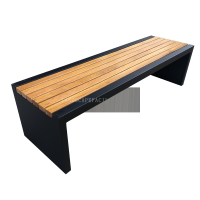Welcome to the website for landscape facilities products and knowledge.
How can a landscape bar counter be designed to complement the architectural style of the surrounding buildings?
Integrating a landscape bar counter with existing architectural styles requires thoughtful design consideration to create visual harmony and contextual relevance. The process begins with analyzing the predominant architectural features, materials, and design language of surrounding structures. For traditional architecture, consider incorporating classic materials like stone or brick that match historical buildings, while contemporary settings might call for sleek concrete, glass, or corten steel that complements modern aesthetics.
The bar counter's form should echo architectural elements present in the environment—whether through curved lines that mirror arched windows, angular designs that match sharp rooflines, or organic shapes that blend with natural surroundings. Height and proportions must be carefully calibrated to neither dominate nor disappear against the architectural backdrop.
Material selection plays a crucial role in creating cohesion. Using locally sourced stone or regionally characteristic wood species can ground the design in its context. For urban settings, matching industrial materials like exposed steel or reclaimed brick can create continuity with converted warehouses or loft buildings. The finish should complement rather than compete—brushed metals for contemporary structures, weathered finishes for rustic settings, or polished surfaces for formal architecture.
Color palette integration is equally important. Analyze the surrounding buildings' color schemes and either match primary colors or select complementary tones that enhance rather than clash with the environment. In historic districts, consider traditional pigment ranges, while in modern developments, monochromatic schemes might be more appropriate.
Lighting design must align with architectural lighting principles. For classical buildings, warm, soft lighting in traditional fixtures maintains character, while modern structures might call for minimalist LED strips or dramatic spotlighting. The lighting temperature and intensity should harmonize with surrounding buildings' illumination patterns.
Ultimately, successful integration means the bar counter feels inherently part of its environment rather than an afterthought. It should enhance the architectural narrative of the space while providing functional service. By studying contextual cues and applying thoughtful design responses, landscape bar counters can become seamless extensions of their architectural surroundings, adding value rather than visual discord to the built environment.
Related search:

Recommendation
Modern Stainless Steel Begonia Wood Park Chair Outdoor Courtyard Leisure Sun Protection Bench Long Seat